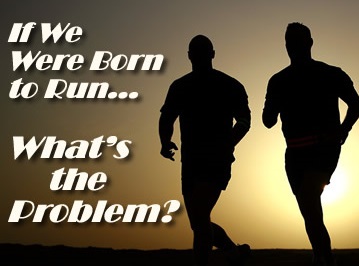If We Were Born to Run, What’s the Problem?
 When rock living-legend Bruce “The Boss” Springsteen began penning “Born to Run” in 1974, he may well have been writing figuratively, but the key line, “Baby, we were born to run”, stands on its own as a literal statement.
When rock living-legend Bruce “The Boss” Springsteen began penning “Born to Run” in 1974, he may well have been writing figuratively, but the key line, “Baby, we were born to run”, stands on its own as a literal statement.
Running is innate in humans; toddlers start learning to run as soon as they can walk, and, once they get the hang of it, you can hear their squeals of delight as they run around. In adulthood, some people run to get fit or lose weight, while others simply enjoy the experience. An iconic moment in J. D. Salinger’s 1951 controversial classic Catcher in the Rye sees the adolescent anti-hero, Holden Caulfield break into a run across his school grounds. “I don’t even know what I was running for,” muses Caulfield afterward, “I guess I just felt like it.”
Journalist and author Christopher McDougall, in his 2009 best-selling book Born to Run, expounds the theory devised by Harvard scientists that during human evolution we became runners to chase down prey. So, humans are hardwired to run, and millions across the world enjoy doing just that. In England alone, more than two million people put on their running shoes at least once a week, according to Sport England.
The feet obviously play a vital role in running, and they take a heavy pounding, absorbing more force than any other part of the body. When you jog, for example, your foot strikes the ground with an impact of up to three times your body weight. According to the American Podiatric Medical Association, a runner weighing 150 pounds will subject their feet to an impact of 150 tons over three miles.
The foot is a complex mechanical structure containing 26 bones, 33 joints and 100 muscles, ligaments and tendons. Hardly surprising, then, that runners are particularly prone to foot damage and injuries. A survey by Runner’s World, the global monthly magazine for runners of all levels, found that 20% of its readers had suffered a foot injury during the previous 12 months.
Foot problems can, at the very least, spoil the fun of running, and, in more serious cases, put a runner out of action completely, even permanently. The feet can also indicate underlying health problems for runners. These two facts make it imperative for runners to pay attention to the condition of their feet, and take appropriate action in the event of a problem.

